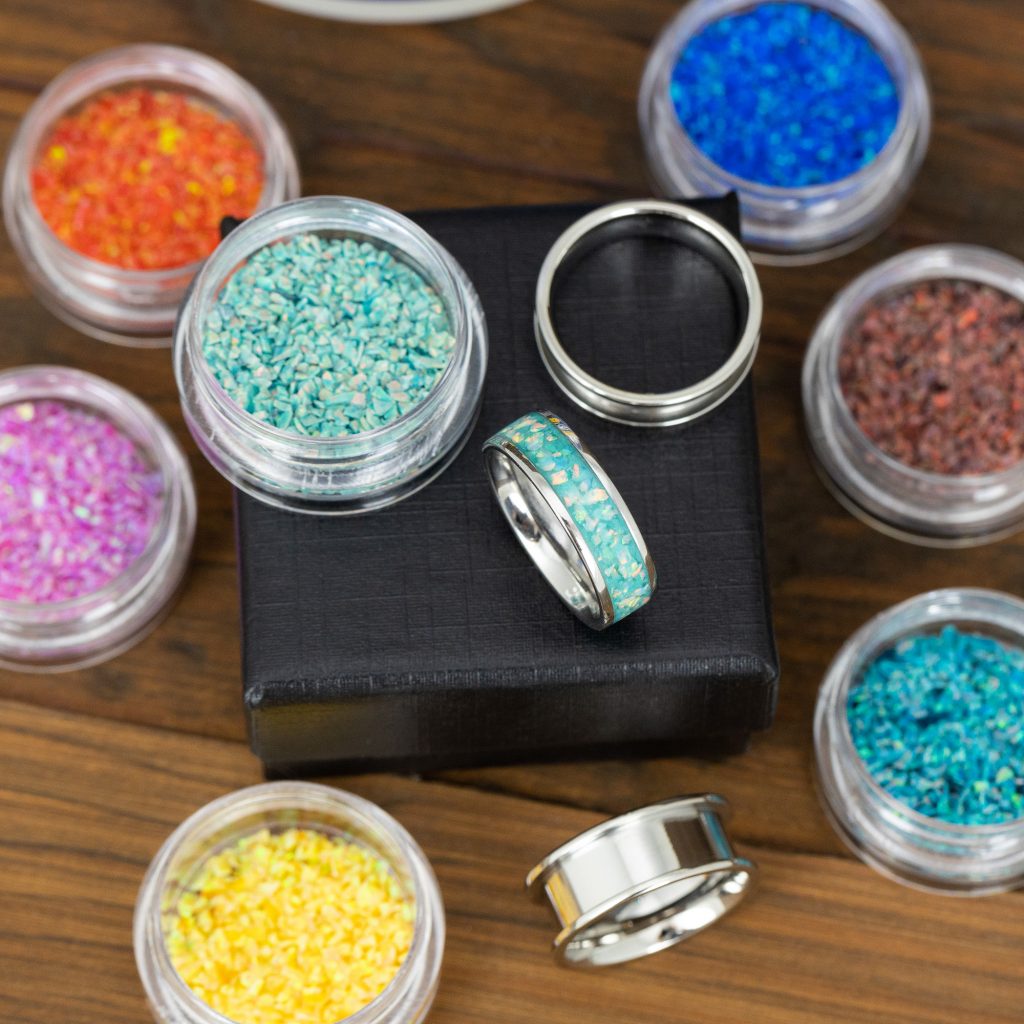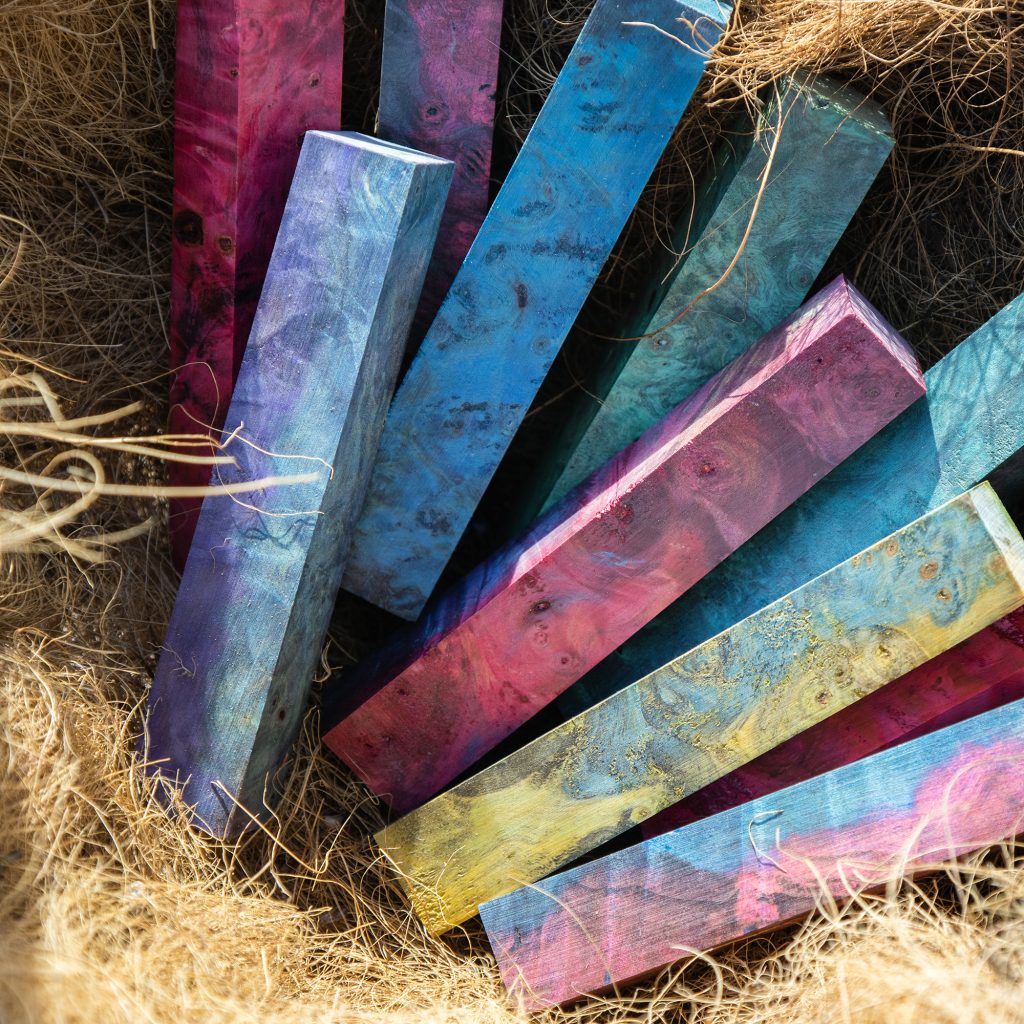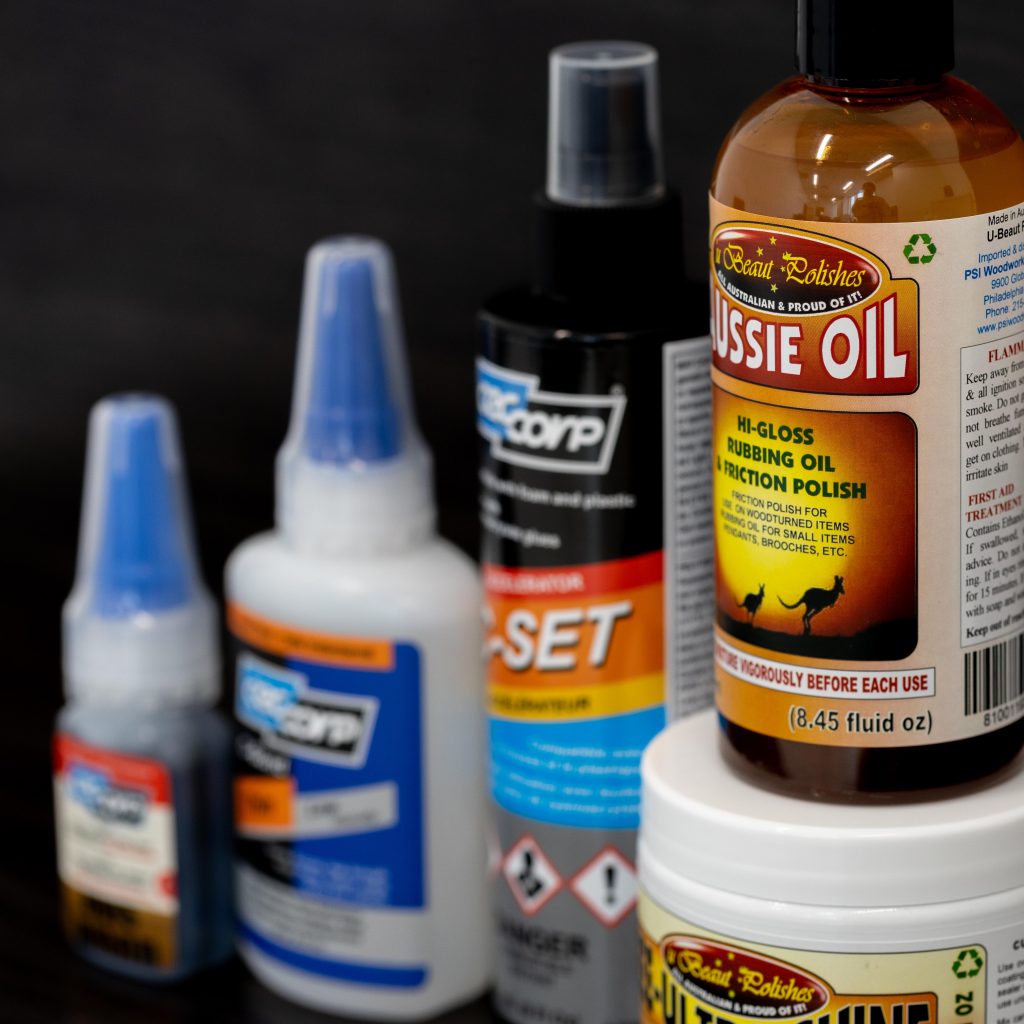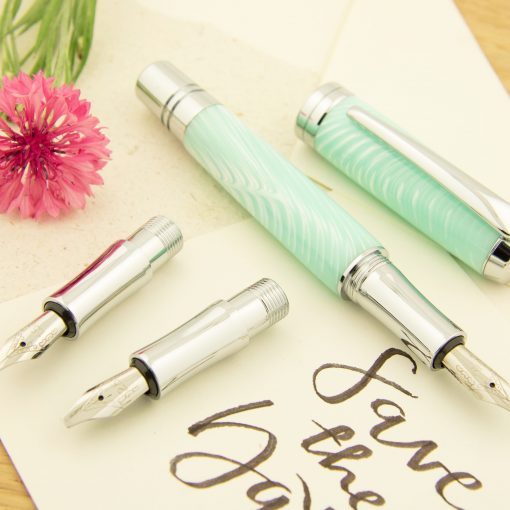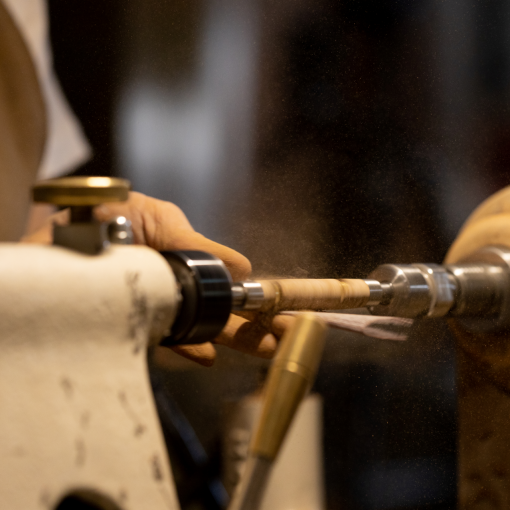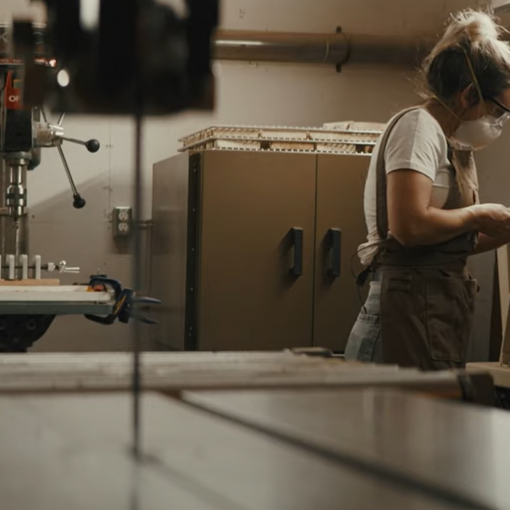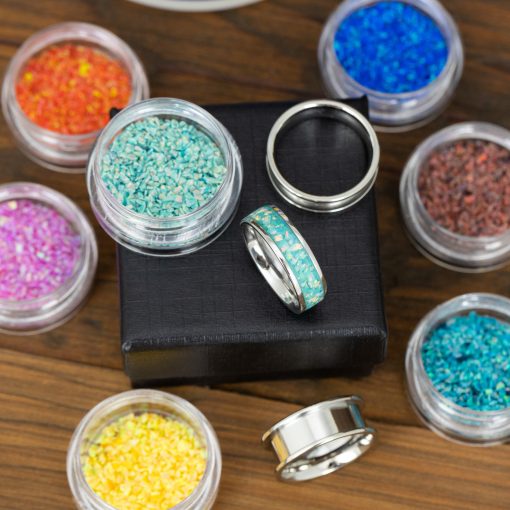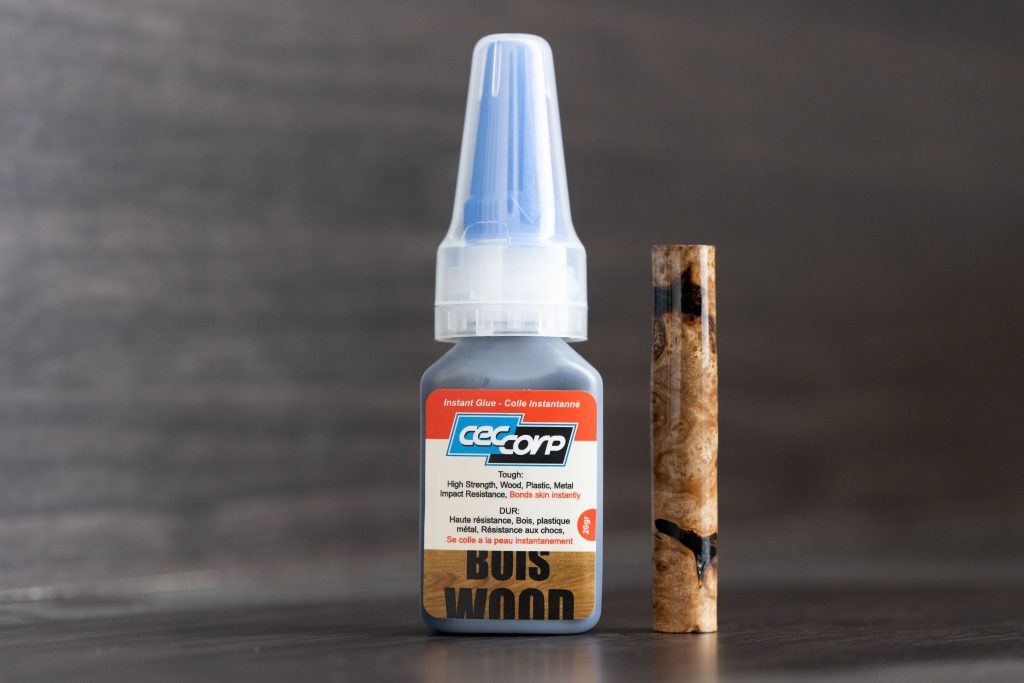
Get the most of your CA Glue with William Wood-Write!
While many pen turners have a stash of CA glue in their toolbox, not many know about the incredible versatility this glue has up its sleeve. Whether you find a crack in your nearly-finished pen blank or need to ensure your project’s long-term durability, CA glue will certainly come to your rescue. William Wood-Write is here to make sure our customers are getting the most out of their CA glue by sharing the top 5 ways we like to use our favourite glue!
1. As a Finish
Also known as Cyanoacrylate, CA glue remains our absolute favourite way to finish wooden pens and smaller wooden projects for a variety of reasons. First and foremost, CA glue provides an extremely durable and long-lasting finish. The longevity this glue provides makes it ideal for projects that will be frequently handled, like Measuring Cups or Razor Handles.
To finish a project with CA Glue (1) drop a few drops of Thin CA Glue on a clean shop towel and gently distribute the product onto a fully turned and sanded blank while it rotates on the lathe (with the lathe speed set lower than you would to turn), and (2) Make the drying process instant by following your layer of CA glue with a few sprays of Accelerator Spray. Repeat these two steps between 8-12 times to ensure your blank is fully protected by the glue. Complete your project by gently re-sanding the blank with micro mesh sheets, being careful not to completely remove the CA glue you just applied, and buffing in a coat of Hut Ultra Gloss Plastic Polish.
Whether you’re making a Ballpoint Pen, a Pizza Cutter, or a Ratcheting Screwdriver, finishing your project with CA glue will guarantee your project’s durability for years to come.
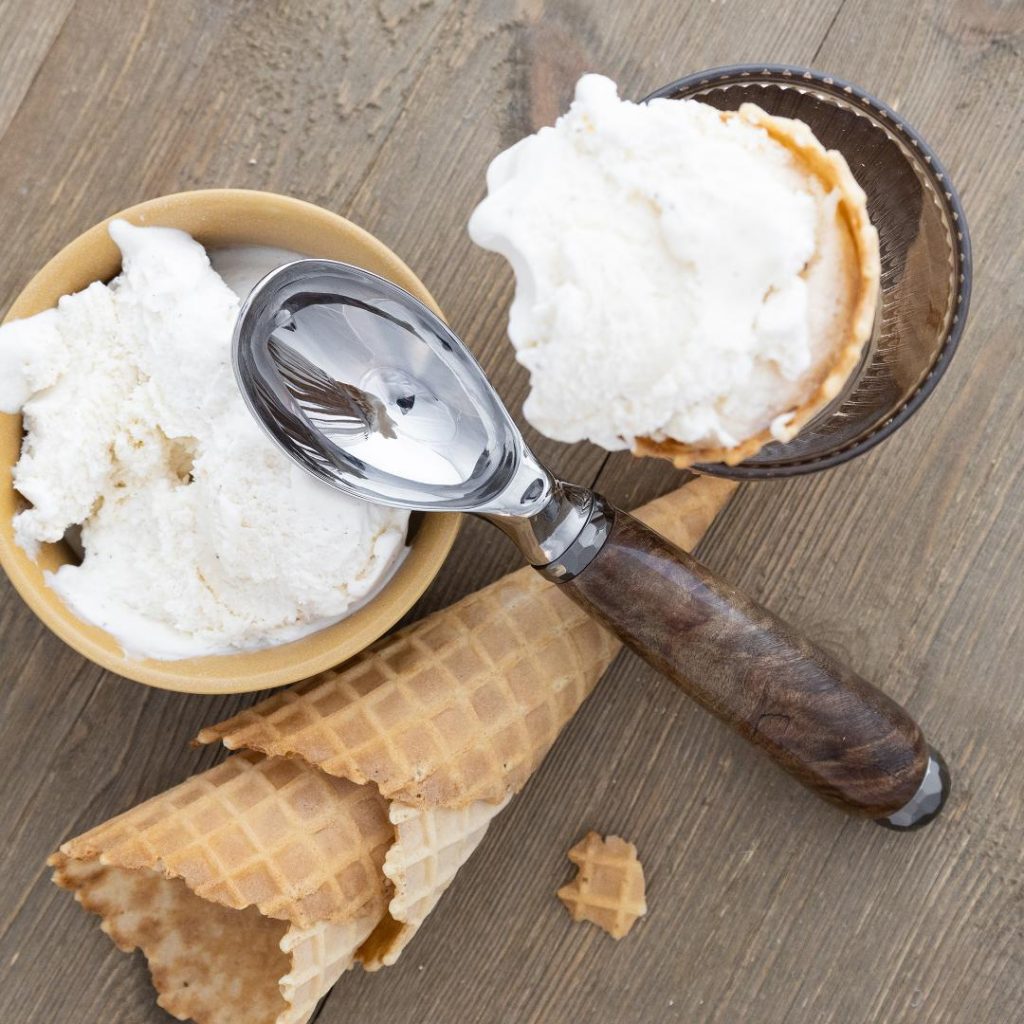
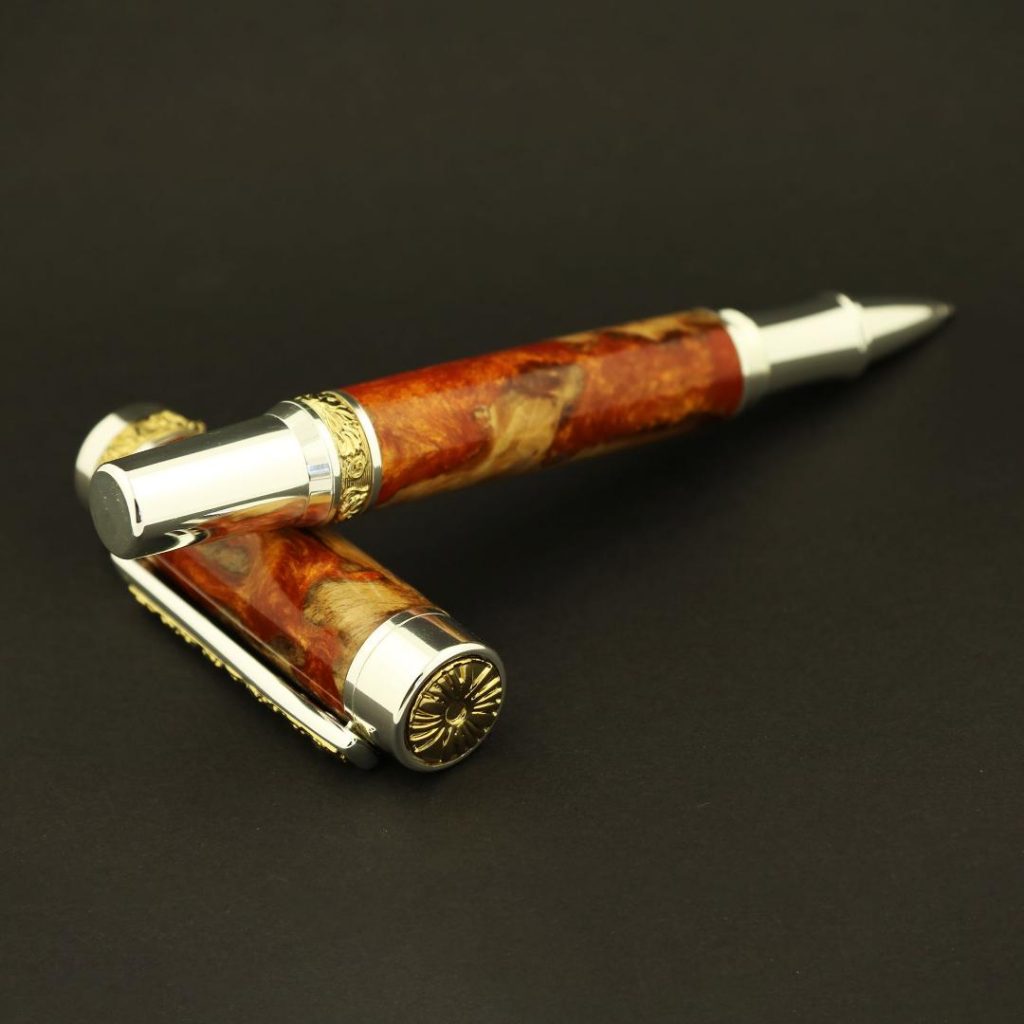
2. Repairing Blemishes/Cracks
A scenario every woodturner knows: You turn off your lathe, eager to reveal the beautiful blank you’ve turned, and you discover a large gouge near one end of the blank. Instead of considering it damaged and tossing the blank, rescue your project with CA glue! While project finishing is arguably the most popular use of CA glue, not all woodturners know about the glue’s crack-filling capabilities.
Fill small cracks and gouges in blanks with a small amount of C-Bond Medium Black CA Glue. Not only will Black CA Glue fill in any problematic cracks or gouges, the darker hue of the glue will seamlessly blend in with darker blanks and showcase the figuring in lighter blanks.
3. Project Assembly
Along with finishing, one of the most common uses of CA Glue at William Wood-Write is assembling Pen and Project Kits. CA Glue is our favourite glue to use at William Wood-Write when it comes to securing tubes inside pen and project kits prior to turning, as the long-lasting hold and quick setting time make it the perfect adhesive for ensuring your pen tube and blank are inseparable.
To secure a pen tube inside a blank with CA Glue, block the ends of your tube with Baseplate Wax, pour a small line of Medium CA Glue onto a sheet of aluminum foil or wax paper, roll the tube in the glue (making sure to completely saturate the tube) and simply slide the tube into your pre-drilled blank. Securing tubes with CA Glue ensures that your final project will be durable against the wear and tear that frequently damage handmade pens.

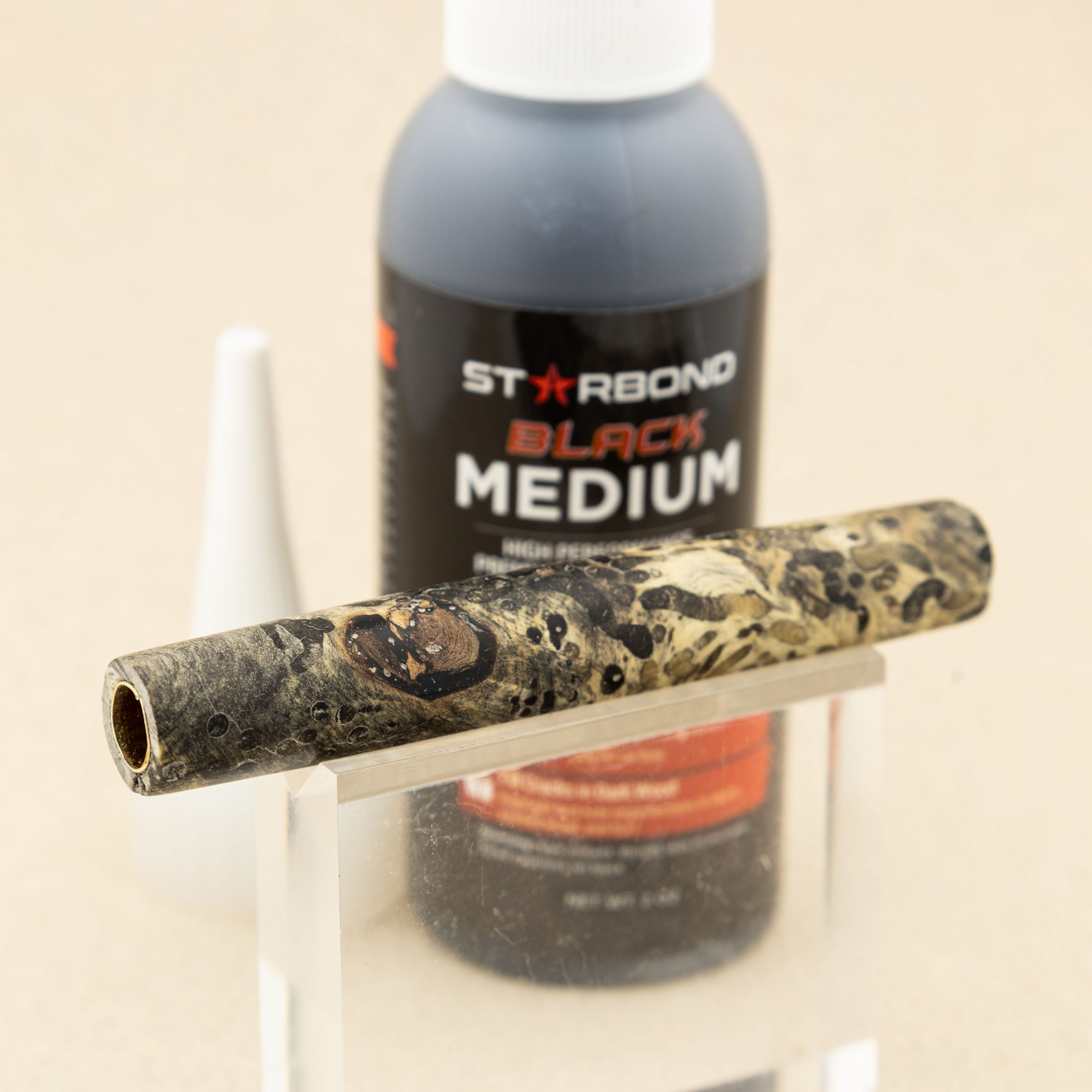
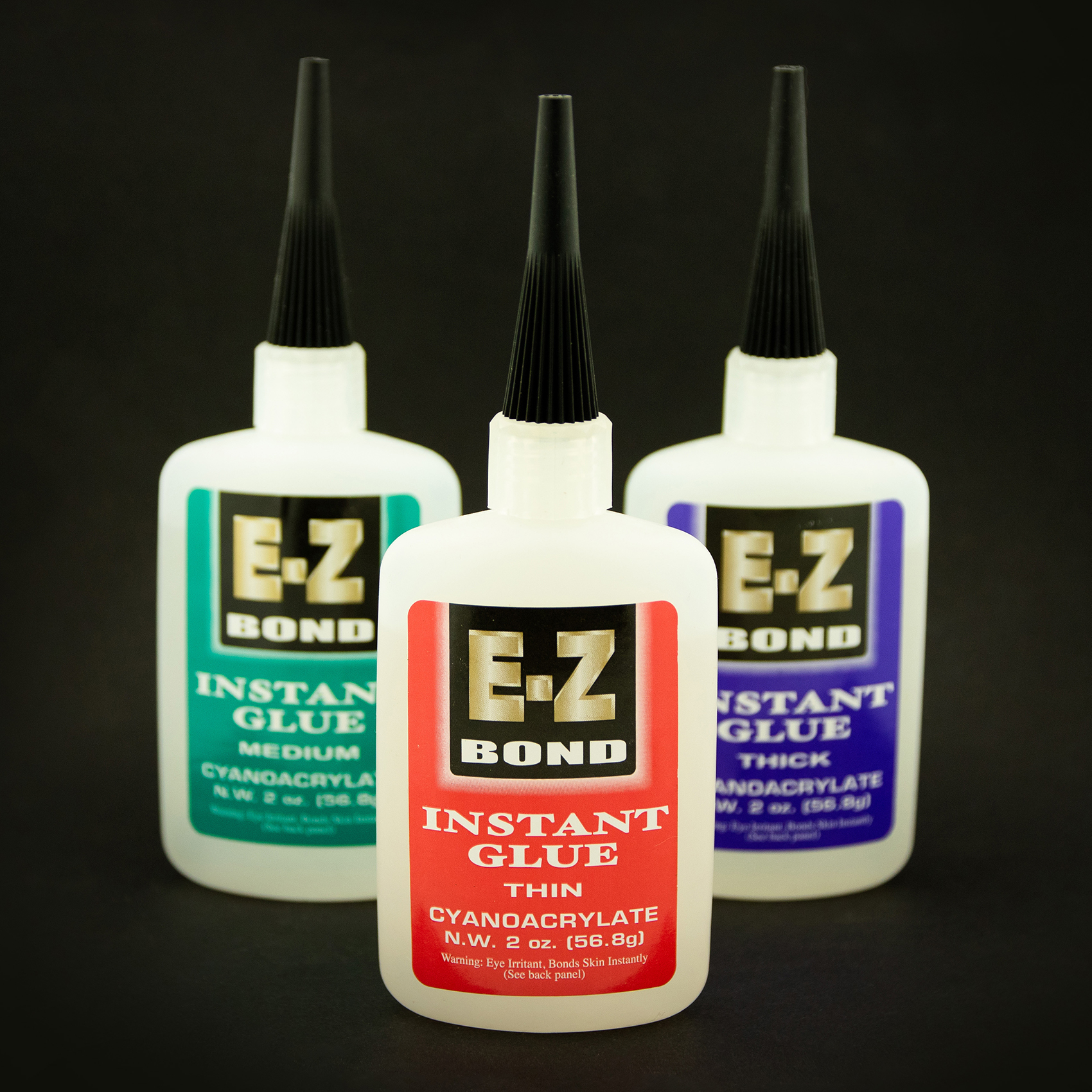
4. Filling Holes/Gouges
Just as CA Glue is often used to fill small cracks and blemishes in wooden pen blanks, this versatile glue is frequently used to fill larger gouges and holes as well. In cases where Black CA Glue just won’t work, or cases where you don’t want to interfere with the figuring and hue of the blank itself, making a CA Glue/Sawdust mixture may do the trick!
To fill a troublesome hole in your wooden blank, simply mix a small amount of Thin CA Glue with a small amount of leftover sawdust to make a paste that perfectly matches your damaged blank. Press the mixture into the hole/crack using your finger or a popsicle stick and follow this step by re-sanding your blank with Micro Mesh Cushioned Pads before finishing your project with Hut Ultra Gloss Plastic Polish. Using CA Glue to fill holes in blanks serves to prevent them from damaging your blank further as well as to ensure the durability of your final project.
5. Fingerprint Analysis
While we, here at William Wood-Write, haven’t actually used CA Glue for this purpose ourselves, we have friends who have! In forensic investigations involving fingerprints, Cyanoacrylate glue is actually used to detect fingerprints on non-porous surfaces like glass and plastic. Specialists place a acrylic knife with no visible fingerprint, for example, inside a chamber full of cyanoacrylate gas and, because this particular gas binds with the oils in our fingers and leaves behind white residue, any fingerprints are instantly visible!
While not necessarily relevant in the world of pen turning, this interesting use of CA Glue highlights just how versatile this adhesive is. Whether you are a seasoned pen turner looking to get the most of their products, or a forensic investigator searching for fingerprints, CA Glue is the ultimate glue for your specific needs.
Have another way to use CA Glue? Let us know by contacting us on Facebook or Instagram!
Subscribe to our newsletter to get all the deals! We promise we won’t bother you – only our weekly specials on Sundays to enjoy with your morning coffee and our turning tips newsletter for pen turners every Wednesday.
